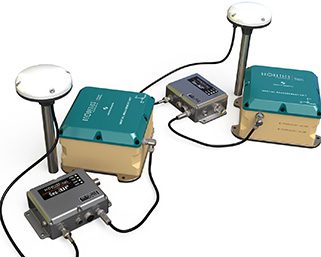
SAASM High-Accuracy, Real-Time Relative Navigation System
Geo-RelNAV® SAASM is a unique navigation system that provides relative navigation information between moving platforms. Information computed by the system includes values such as relative velocity (closure rate) and relative orientation. This information can be used for applications with a SAASM GPS requirement including autonomous aerial refueling, autonomous shipboard landing, vehicle platooning and UAV swarming.
The system natively provides solutions in the correct, non-inertial reference frame. Solutions are available via serial and/or Ethernet (both TCP and UDP) providing convenient input to external systems as well as the tools for analysis engineers to monitor the data in real-time using standard monitoring and recording tools. Geo-RelNAV® SAASM provides R-TSPI in different frames, including body-frame, local navigation frame (wander-azimuth) and earth-fixed frame, as well as transferring the solution to arbitrary points of interest on the platform.

- Each Geo-RelNAV® SAASM system includes 2 subsystems, primary and secondary.
- Size/ Weight/Power – 33.8 in3 (3.95×3.05×2.06) / 14.4 oz. / 10 – 30 VDC @ 2 Amps min. (each subsystem, not including external IMU).
- Temperature Range – Specified: -20°C to +65°C | Operating: -40°C to +70°C.
- Interfaces – External power connector, TNC GPS antenna connector, 1 Ethernet data port, 3 RS-232 .serial ports, 1PPS output, 4 status LEDs, Keyload connector, zeroize button.
- Real-Time Data Output – Navigation solutions at IMU rate (depending on data link throughput). available via Ethernet, RS-232.
- Data Recording/Logging – Navigation solutions, raw sensor data, diagnostics.
- Web User Interface (status, configuration, log, SW update).
- Autonomous aerial refueling
- Autonomous landing systems for UAV’s
- UxV collision avoidance and swarming
- UxV leader/follower formations
- Platooning
